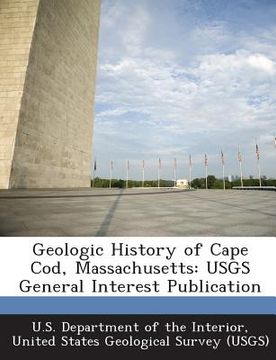Geologic History of Cape Cod, Massachusetts: Usgs General Interest Publication (en Inglés)
Reseña del libro "Geologic History of Cape Cod, Massachusetts: Usgs General Interest Publication (en Inglés)"
Cape Cod, a sandy peninsula built mostly during the Ice Age, juts into the Atlantic Ocean like a crooked arm. Because of its exposed location, Cape Cod was visited by many early explorers. Although clear-cut evidence is lacking, the Vikings may have sighted this land about 1,000 years ago. It was visited by Samuel de Champlain in 1605, and his detailed descriptions and charts have helped present-day scientists to determine the rate of growth of Nauset Beach marsh and Nauset spit. Bartholomew Gosnold, a lesser known explorer, settled for a short time on the Elizabeth Islands to the southwest and gave Cape Cod its name in 1602. The Pilgrims first landed in America on the tip of Lower Cape Cod after they were turned back from their more southerly destination by shoals between Cape Cod and Nantucket Island. On Cape Cod they found potable water and food and had their first fight with the natives. The Pilgrims, however, decided that this land was too isolated, too exposed, and too sandy to support them, and they sailed across Cape Cod Bay to establish Plymouth. These features remain today. Small villages are separated by large areas of forest, dune, beach, and marsh. This unspoiled natural beauty makes Cape Cod one of the most favored vacation areas for the people living in the thickly settled Northeastern States. Cape Cod is of particular interest to geologists because it was formed by glaciers very recently in terms of geologic time. During the Great Ice Age, (the Pleistocene Epoch which began 2 to 3 million years ago), glaciers advanced from the north into the temperate regions of the Earth. Glacial ice covered the land at least four times. Each advance was accompanied by a worldwide lowering of sea level because the source of the ice was water from the seas. When the glaciers melted, the climate and sea level were probably much like they are today. In fact, some scientists believe that the Earth is presently between glacial episodes and that ice once again will advance across the land.

